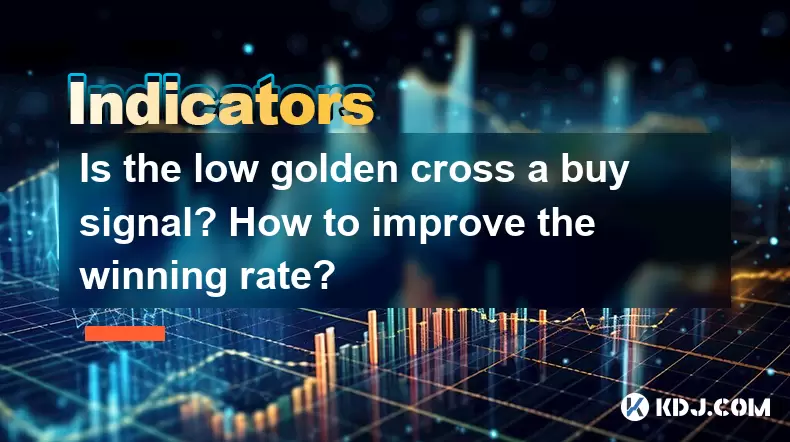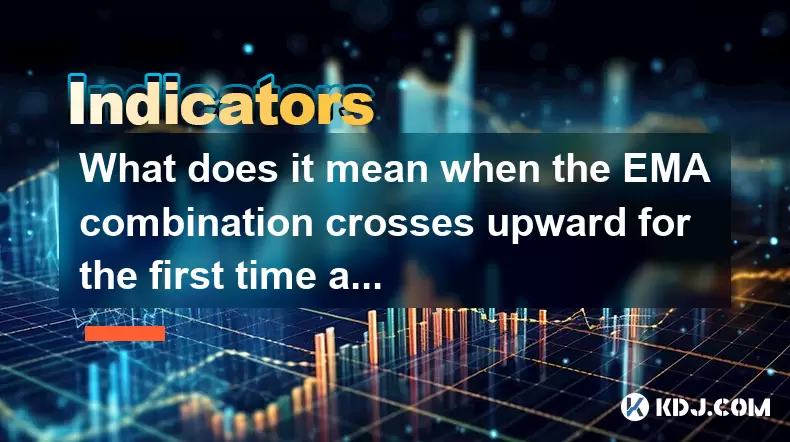-
 Bitcoin
Bitcoin $118600
0.36% -
 Ethereum
Ethereum $3855
1.06% -
 XRP
XRP $3.195
-0.09% -
 Tether USDt
Tether USDt $1.000
-0.04% -
 BNB
BNB $844.5
6.23% -
 Solana
Solana $191.3
2.83% -
 USDC
USDC $0.9997
-0.01% -
 Dogecoin
Dogecoin $0.2376
0.10% -
 TRON
TRON $0.3242
0.83% -
 Cardano
Cardano $0.8222
0.13% -
 Hyperliquid
Hyperliquid $45.26
6.53% -
 Sui
Sui $4.200
-2.56% -
 Stellar
Stellar $0.4336
-1.24% -
 Chainlink
Chainlink $18.86
0.28% -
 Hedera
Hedera $0.2796
-1.75% -
 Bitcoin Cash
Bitcoin Cash $583.3
-1.84% -
 Avalanche
Avalanche $27.06
8.09% -
 Litecoin
Litecoin $112.3
-1.16% -
 Toncoin
Toncoin $3.353
0.58% -
 UNUS SED LEO
UNUS SED LEO $8.968
-0.11% -
 Shiba Inu
Shiba Inu $0.00001395
-0.54% -
 Ethena USDe
Ethena USDe $1.001
-0.03% -
 Uniswap
Uniswap $10.76
0.69% -
 Polkadot
Polkadot $4.175
0.26% -
 Monero
Monero $326.7
1.07% -
 Bitget Token
Bitget Token $4.665
1.61% -
 Dai
Dai $0.9998
-0.02% -
 Pepe
Pepe $0.00001271
0.32% -
 Cronos
Cronos $0.1416
2.01% -
 Aave
Aave $299.3
1.15%
Is the low golden cross a buy signal? How to improve the winning rate?
The low golden cross signals a potential bullish reversal in crypto when the 50-day SMA crosses above the 200-day SMA during a downturn, but it works best with added confirmation tools.
Jun 17, 2025 at 10:28 am

What is a Low Golden Cross?
The low golden cross refers to a specific type of technical indicator in cryptocurrency trading where the short-term moving average crosses above the long-term moving average during a period of market decline. This pattern often suggests that a downtrend may be reversing into an uptrend. Unlike a regular golden cross, which can occur at any point in the market cycle, the low golden cross typically appears near support levels or after a significant price drop.
In crypto markets, where volatility is high and trends can change rapidly, identifying a valid low golden cross becomes crucial for traders seeking entry points. However, it's not always a reliable signal on its own, especially when used without additional filters or confirmation mechanisms.
Important: The term "low" implies that this crossover occurs at relatively lower price levels compared to recent historical data.
How Does the Low Golden Cross Work in Cryptocurrency Markets?
In the context of digital assets like Bitcoin or Ethereum, the low golden cross can be applied using common moving averages such as the 50-day and 200-day simple moving averages (SMA). When the 50-day SMA rises above the 200-day SMA after a prolonged bearish phase, it forms what traders consider a potential bullish reversal.
Here’s how it typically unfolds:
- A sustained downtrend causes prices to fall significantly.
- Market sentiment turns overly pessimistic, leading to capitulation.
- Sellers exhaust themselves, and buyers begin stepping in cautiously.
- As buying pressure increases, the short-term average (e.g., 50-day) starts to rise faster than the long-term one (e.g., 200-day).
- Eventually, the 50-day line crosses above the 200-day line — forming the low golden cross.
However, due to the volatile nature of cryptocurrencies, false signals are common unless other tools are used alongside this indicator.
Why Is the Low Golden Cross Not Always Reliable?
While the low golden cross may appear promising, several factors reduce its effectiveness in isolation:
- Market manipulation: Large players can influence price action around key moving averages, creating fake signals.
- Whipsaw movements: Sudden reversals following the cross can trap traders who enter positions too early.
- Timeframe mismatch: What looks like a strong signal on a daily chart might be noise on a weekly or hourly chart.
- Volume discrepancies: If volume doesn’t confirm the breakout, the move may lack sustainability.
To avoid being misled, traders must combine this signal with other forms of analysis.
How Can You Improve the Winning Rate of the Low Golden Cross Strategy?
Improving the success rate involves incorporating multiple layers of validation and filtering criteria. Here are some effective ways to do so:
- Use volume confirmation: Ensure that the cross happens alongside a surge in trading volume, indicating stronger buyer interest.
- Check relative strength index (RSI): Look for RSI values below 30 before the cross to confirm oversold conditions.
- Add Fibonacci retracement levels: Identify whether the cross occurs near major support zones derived from previous price swings.
- Incorporate candlestick patterns: Look for bullish reversal patterns (like hammer or engulfing candles) around the time of the cross.
- Filter with trendlines or channels: Confirm that the price has broken out of a descending channel or touched a long-term trendline.
- Avoid choppy markets: Use volatility indicators like Bollinger Bands to determine if the market is ranging rather than trending.
By layering these techniques, traders can increase the probability that the low golden cross leads to a profitable trade.
Practical Steps to Apply the Low Golden Cross in Crypto Trading
If you're planning to use the low golden cross in your trading strategy, follow these steps carefully:
- Choose appropriate timeframes: Focus on daily or weekly charts for more reliable signals.
- Set up moving averages: Use 50-period and 200-period SMAs or EMAs depending on your preference.
- Wait for the actual crossover: Don't anticipate the signal — wait until the short-term MA clearly crosses above the long-term one.
- Verify with volume spikes: Check if there's a noticeable increase in volume during or immediately after the cross.
- Look for confluence with other indicators: Ensure that other technical tools align with the bullish bias.
- Place stop-loss orders: Protect your capital by placing a stop-loss just below the recent swing low.
- Set realistic take-profit targets: Base them on previous resistance levels or measured moves.
These steps help ensure that you're not blindly entering trades based solely on the cross but instead validating each opportunity thoroughly.
Frequently Asked Questions (FAQs)
Q1: Can the low golden cross be used for altcoins?
Yes, the low golden cross applies to all types of cryptocurrencies, including altcoins. However, due to their higher volatility and lower liquidity, altcoins may produce more false signals. It's essential to apply stricter filters and use higher timeframes when analyzing smaller-cap coins.
Q2: How does the low golden cross differ from the death cross?
The death cross is the opposite of the golden cross — it occurs when the short-term moving average falls below the long-term moving average, signaling a potential bearish trend. While the low golden cross suggests a possible bottom formation, the death cross often indicates a continuation or start of a downtrend.
Q3: Should I rely solely on the low golden cross for trading decisions?
No, relying exclusively on any single indicator is risky. Combining the low golden cross with other tools like volume analysis, candlestick patterns, and support/resistance levels significantly improves decision-making accuracy.
Q4: Are there automated tools to detect low golden crosses?
Yes, platforms like TradingView allow users to set up alerts for golden cross events. Some advanced bots and algorithmic systems also integrate this logic into their strategies. However, automation should still include risk management components to prevent losses from false signals.
Disclaimer:info@kdj.com
The information provided is not trading advice. kdj.com does not assume any responsibility for any investments made based on the information provided in this article. Cryptocurrencies are highly volatile and it is highly recommended that you invest with caution after thorough research!
If you believe that the content used on this website infringes your copyright, please contact us immediately (info@kdj.com) and we will delete it promptly.
- Pepe Dollar vs. Bitcoin HYPER: The Crypto Supercycle Meme Showdown
- 2025-07-29 01:10:12
- BlockDAG, BNB, DOGE: The New York Minute on 2025's Crypto Frontrunners
- 2025-07-29 01:50:12
- AVAX, Solana, and the AI Token Surge: What's Hot and What's Not
- 2025-07-29 01:50:12
- XRP Price Surge Potential: Chart Analysis and What's Next
- 2025-07-29 01:55:48
- Crypto Investments, Dogecoin Substitutes, and Wealthy Returns: Navigating the Meme Coin Mania and Beyond
- 2025-07-29 00:30:13
- Iron Age Treasures: Coins and Brooches in the Test Valley
- 2025-07-29 01:55:48
Related knowledge

What does it mean when the EMA combination crosses upward for the first time after sideways trading?
Jul 28,2025 at 03:43pm
Understanding the EMA and Its Role in Technical AnalysisThe Exponential Moving Average (EMA) is a widely used technical indicator in cryptocurrency tr...

What signal does the ROC send when it rises rapidly from a low level and breaks through the zero axis?
Jul 27,2025 at 10:15am
Understanding the Rate of Change (ROC) IndicatorThe Rate of Change (ROC) is a momentum-based oscillator used in technical analysis to measure the perc...

What does it mean when the price breaks through the double bottom neckline and the moving averages are arranged in a bullish pattern?
Jul 28,2025 at 10:57am
Understanding the Double Bottom PatternThe double bottom is a widely recognized reversal chart pattern in technical analysis, particularly within the ...

What signal does the DMA fast line cross the slow line above the zero axis?
Jul 28,2025 at 05:42am
Understanding the DMA Indicator and Its ComponentsThe DMA (Difference of Moving Averages) indicator is a technical analysis tool used in cryptocurrenc...

What does it mean that the rebound is blocked after the moving average is arranged in a short position for the first time?
Jul 26,2025 at 10:51am
Understanding the Short-Term Moving Average ConfigurationWhen traders refer to a 'short position arrangement' in moving averages, they are describing ...

What does it mean that the ZIGZAG low point is raised and the high point breaks through the previous peak?
Jul 28,2025 at 03:28am
Understanding the ZIGZAG Indicator in Cryptocurrency TradingThe ZIGZAG indicator is a technical analysis tool widely used in cryptocurrency trading to...

What does it mean when the EMA combination crosses upward for the first time after sideways trading?
Jul 28,2025 at 03:43pm
Understanding the EMA and Its Role in Technical AnalysisThe Exponential Moving Average (EMA) is a widely used technical indicator in cryptocurrency tr...

What signal does the ROC send when it rises rapidly from a low level and breaks through the zero axis?
Jul 27,2025 at 10:15am
Understanding the Rate of Change (ROC) IndicatorThe Rate of Change (ROC) is a momentum-based oscillator used in technical analysis to measure the perc...

What does it mean when the price breaks through the double bottom neckline and the moving averages are arranged in a bullish pattern?
Jul 28,2025 at 10:57am
Understanding the Double Bottom PatternThe double bottom is a widely recognized reversal chart pattern in technical analysis, particularly within the ...

What signal does the DMA fast line cross the slow line above the zero axis?
Jul 28,2025 at 05:42am
Understanding the DMA Indicator and Its ComponentsThe DMA (Difference of Moving Averages) indicator is a technical analysis tool used in cryptocurrenc...

What does it mean that the rebound is blocked after the moving average is arranged in a short position for the first time?
Jul 26,2025 at 10:51am
Understanding the Short-Term Moving Average ConfigurationWhen traders refer to a 'short position arrangement' in moving averages, they are describing ...

What does it mean that the ZIGZAG low point is raised and the high point breaks through the previous peak?
Jul 28,2025 at 03:28am
Understanding the ZIGZAG Indicator in Cryptocurrency TradingThe ZIGZAG indicator is a technical analysis tool widely used in cryptocurrency trading to...
See all articles

























































































